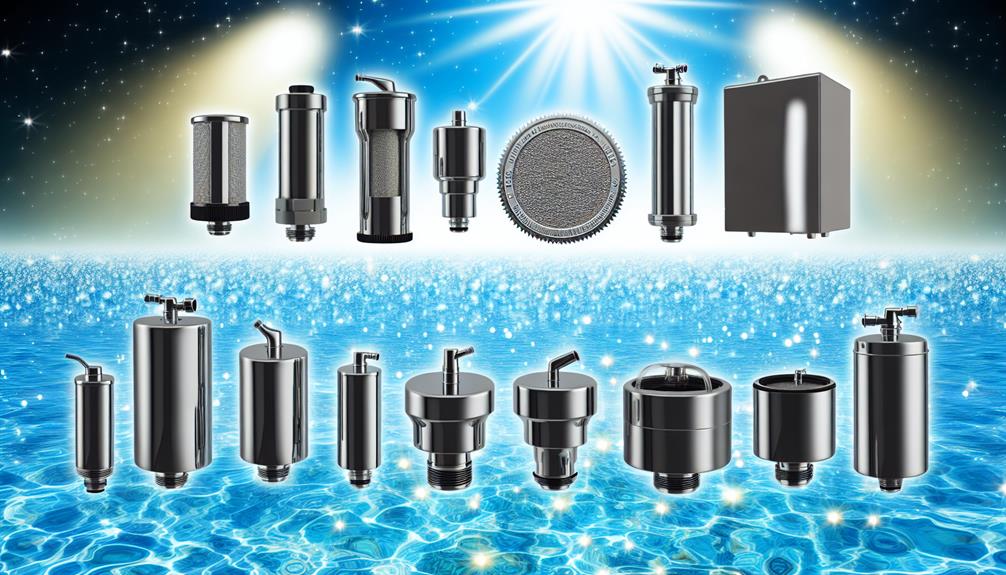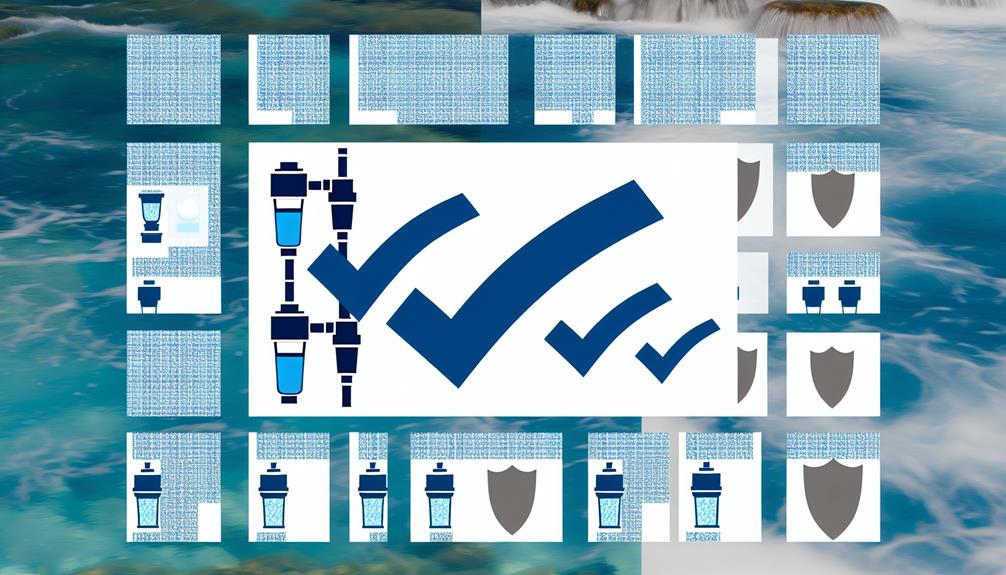You rely on your home water purifier like a mountaineer trusts their climbing gear—both must adhere to stringent safety standards to prevent perilous consequences. When you turn on your tap, you expect that the water flowing out is clean, safe, and free from contaminants that could jeopardize your health. It's not just about the immediate satisfaction of quenching your thirst; it's about the long-term assurance that you're not introducing harmful substances into your body.
To understand why these safety standards are more than a bureaucratic stamp of approval, consider the intricate balance between technology, health, and the environment. Each aspect is a cog in the machinery that safeguards your well-being.
Yet, the question lingers: how are these standards determined, and who ensures that they are upheld? Stick around to unravel the complexities behind the regulations that stand between you and potential waterborne threats.
Understanding Waterborne Hazards
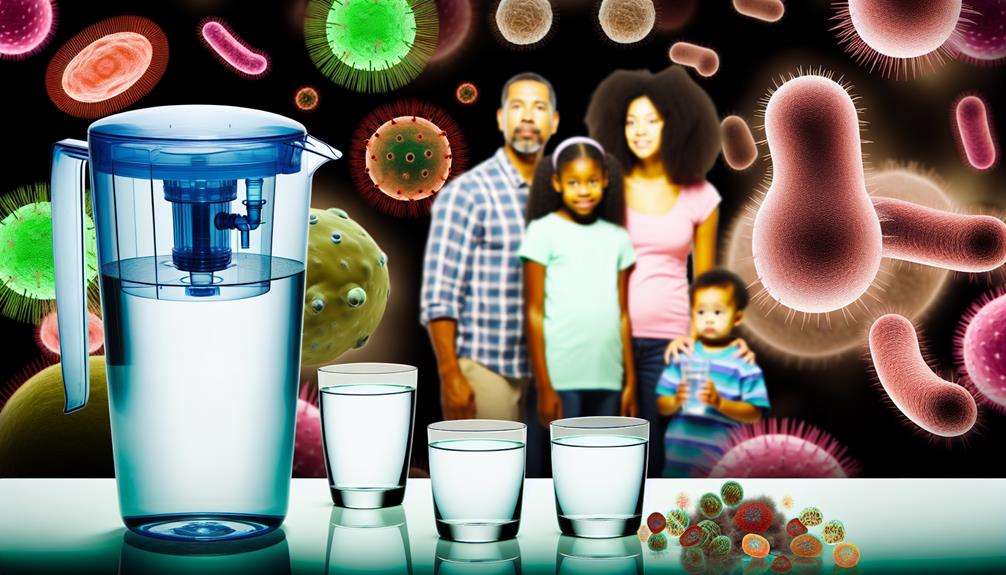
While you rely on water for daily use, it's crucial to recognize that untreated water can harbor a range of waterborne hazards, including pathogens, chemicals, and heavy metals. Understanding the nature of these contaminants is fundamental to assessing the risks they pose to your health.
Chemical contaminants such as lead, arsenic, and nitrates are pervasive in some water supplies, especially in areas with significant industrial activity or agricultural runoff. Chronic exposure to these substances, even in trace amounts, can lead to serious health issues, including neurological disorders and cancer. The technical challenge lies in detecting and quantifying these contaminants, as they may be present at concentrations that are harmful over time but mightn't cause immediate illness.
Microbial threats, on the other hand, include bacteria, viruses, and protozoa that can lead to acute conditions such as gastroenteritis, cholera, or more severe diseases. Waterborne pathogens are particularly insidious because they can proliferate rapidly under favorable conditions, and infection can occur with just a small ingested dose.
Therefore, the implementation of stringent safety standards for home water purifiers isn't just beneficial; it's imperative. These standards ensure that water purification technology is capable of consistently removing or neutralizing these hazardous agents, safeguarding your health with every glass you drink.
Regulatory Compliance Importance
Recognizing the threats posed by waterborne hazards underscores the necessity for strict regulatory compliance in home water purifier systems to protect public health. Regulatory oversight ensures that manufacturers adhere to established safety standards, which are designed based on rigorous scientific analysis and risk assessment. Compliance verification, a critical component of this process, serves to confirm that water purifiers meet or exceed these safety standards before they reach your home.
You're entrusting your family's health to these systems, so the importance of such regulations can't be overstated. When manufacturers comply with regulatory standards, they're not just following rules; they're demonstrating commitment to consumer safety and product efficacy. This compliance is verified through independent testing and certification processes, which provide a transparent and reliable measure of a purifier's performance.
As a consumer, you should look for evidence of regulatory compliance when selecting a home water purifier. It's not just about the immediate impact on your water's taste or clarity; it's about ensuring long-term health and well-being. Manufacturers that prioritize regulatory compliance are investing in your trust and safety, and regulatory bodies are continuously updating standards to respond to new threats, ensuring that the purifiers in your home remain as safe and effective as possible.
Purification Technology and Safety
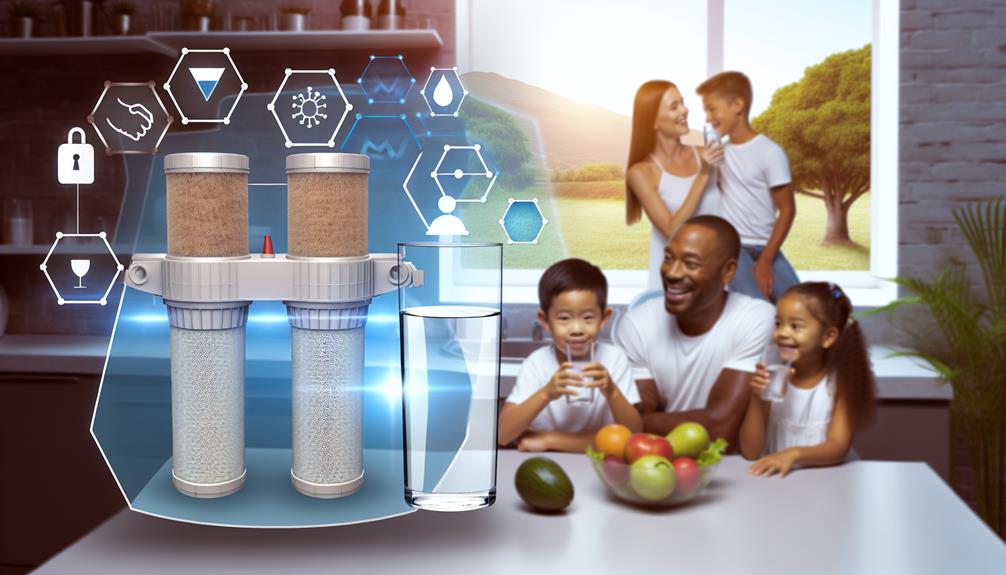
The efficacy of home water purifier technologies hinges on their ability to eradicate contaminants without compromising safety. You must consider the specific purification methods—such as reverse osmosis, UV treatment, or activated carbon filtration—and their respective filter efficacy. Each technology targets different contamination indicators, which can include biological pathogens, chemical pollutants, or sediment.
Reverse osmosis, for instance, employs a semi-permeable membrane that removes a high percentage of dissolved inorganics. However, it's less effective against volatile organic compounds (VOCs) unless combined with other filtering layers. UV treatment is excellent for destroying microorganisms but doesn't address heavy metals or chlorine byproducts. Activated carbon filters excel in removing chlorine, VOCs, and taste and odor compounds but may not effectively filter out minerals and salts.
Safety is paramount, and you must ensure your water purifier doesn't add harmful byproducts during the purification process. For example, some systems can leach chemicals from filter materials into the water. Regular maintenance and timely replacement of filter components are critical to maintaining safety and performance standards.
Consumer Health Protection Measures
To safeguard consumer health, water purifiers must adhere to stringent regulatory standards that ensure the elimination of harmful contaminants without introducing new risks.
It's crucial to understand the health implications of water impurities, which range from acute gastrointestinal illnesses to long-term diseases such as cancer. Consequently, the role of policy enforcement becomes pivotal to certify that water purifiers on the market conform to established safety guidelines.
Evidence-based research underscores the need for purifiers to remove biological pathogens, chemical toxins, and sediments while maintaining water quality. Technical metrics such as the reduction of total dissolved solids (TDS), the presence of heavy metals, and the efficacy of disinfection processes are assessed during certification. Policy enforcement ensures that manufacturers can't deviate from these critical safety benchmarks.
You, as a consumer, rely on these measures to protect your family's health. It's not just about the water tasting good; it's about it being free from contaminants that could cause illness. Therefore, when policies are strictly enforced, and compliance with safety standards is non-negotiable, the health risks associated with impure water are significantly minimized, providing you with the peace of mind you deserve.
Maintenance and Operational Standards
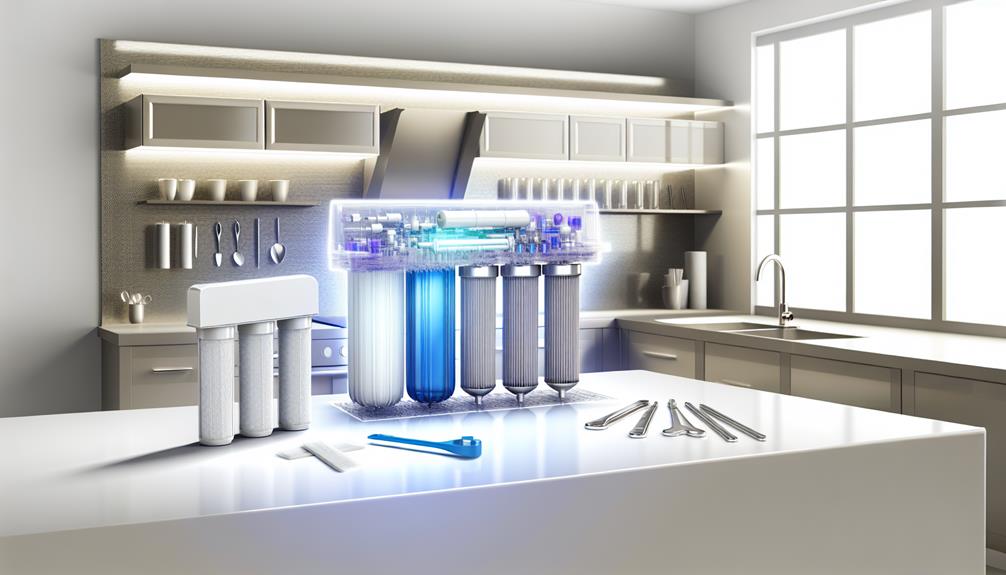
Beyond ensuring the initial safety of water purifiers, regular maintenance and operational protocols are critical to the sustained protection of your drinking water.
You must recognize that filter lifespan is a pivotal aspect of these standards. Over time, the efficacy of filters wanes due to the accumulation of contaminants, which can compromise water quality. Scientific studies show that an expired filter not only fails to remove contaminants but also can become a breeding ground for bacteria. Therefore, adherence to recommended filter replacement schedules is non-negotiable for your health.
Installation protocols, too, play a vital role. Incorrect installation can lead to water bypassing the filtration system entirely, rendering the purifier ineffective. It's essential to follow manufacturer guidelines or employ certified professionals who understand the nuances of proper setup.
Moreover, operational checks, such as monitoring for leaks or irregular water flow, are necessary to ensure the system is functioning optimally. These measures, when executed diligently, not only extend the life of your water purifier but also uphold the quality of water you consume, safeguarding against potential health risks.
Conclusion
In conclusion, you must recognize that strict adherence to home water purifier safety standards is crucial. These standards mitigate waterborne risks, ensuring that the purification technology you rely on effectively protects your health.
Regular maintenance and operation within these guidelines not only preserve the purifier's efficacy but also safeguard against potential health hazards.
Stay informed and proactive; your well-being depends on the consistent performance of these sophisticated systems in an ever-changing environment.
